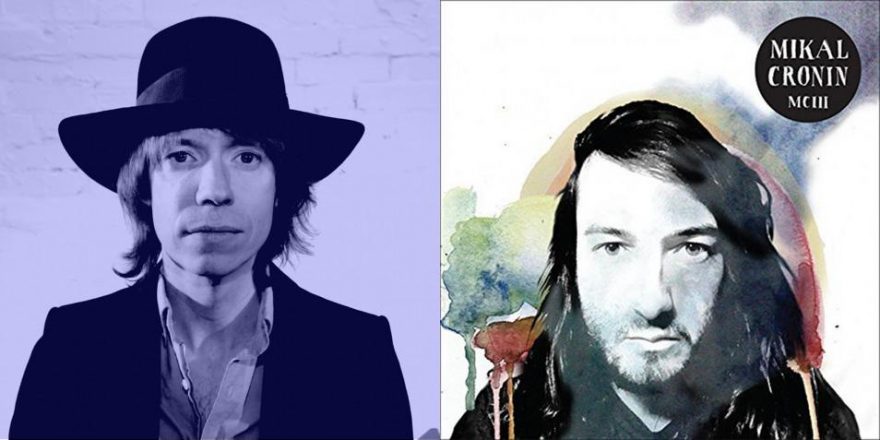I’ve always been drawn to recordings that were ruled by an autocratic hand. Albums on which a solo artist has the talent, confidence and sheer bravado to write, sing, produce and play almost all the instruments themselves. Whether it’s — give or take the occasional backing vocal or keyboard assist — Prince’s early sprint from Prince (1979) through 1999 (1982) or the majority of Todd Rundgren’s musical mountain Something/Anything? (1982), the idea of a singular piece of work that’s been created by an individual without external compromise has always interested me and held a magical, Citizen Kane-style appeal. Those types of records could be fabulous failures of ego and closed-mindedness, or alternately, a revelation of talent previously harnessed by any number of musical or managerial factors. I think I’m also generally in awe of artists with this type of superior capability. While I can sing, play guitar and amble amateurishly (at best!) through some piano, my loose time-keeping skills have bestowed on me the title of “fifth best drummer” in the four-piece recording ensemble known as Sloan.
My other favourite trick, employed by artists with more than a dash of ambition in their genes, is a musical suite of connected songs in a pop context. I’m thinking of the second half of the Beatles’ Abbey Road (1969), or the Who’s mini-opera storybook tale of “A Quick One, While He’s Away” (1966) or even the exciting and inspiring patchwork of the “B-Boy Bouillabaisse” track that wraps up the Beastie Boys’ Paul’s Boutique (1989) album. At its best, it’s a progressive and tuneful mode that can expand the traditional role of a pop song; keeping things interesting and avoiding straying into “extended jam, man” territory as a device for broadening musical horizons. It’s the appeal of both of these elements that made me curious about Mikal Cronin’s latest LP, MCIII. As an artist who not only sings and plays almost all the instruments here himself — excluding a bit of drums and the string and horn parts that he arranged (I mean, hey, even Stevie Wonder had to hire David Sanborn sometimes) — he has, for the first time, also incorporated a suite of thematically connected songs to relay a story of his youth that manages to take up an entire side of the album.
As many people perhaps did, I came to hear of Mikal’s music via Ty Segall. I learned of Segall primarily from a friend of mine, Steve Manale, who designed posters (as well as fantastic, hand-screened “carny-style” rock mirrors) for his gigs whenever he played in Toronto. Since I was a bit of a latecomer to Segall’s prolific output of West Coast rock & roll/psychedelic/garage records, I was even more unaware of the wide net he cast of off-shoot projects and collaborations. Just around the time I finally got into Segall’s double-LP opus Manipulator (2014), it was Steve again who tipped me off to Mikal Cronin. I discovered that Cronin, a school friend of Segall’s who has played bass in his band, had also recorded a couple of records on his own, Mikal Cronin (2011) and MCII (2013). These records stood apart from the Segall circle due to their heavier emphasis on golden melodies over sheer rocking.
Not that Cronin leaves rocking completely behind on his immediately likable and un-confusingly titled third LP. Listeners who appreciate a combination of both Elliott Smith’s melodic melancholy and a healthy dose of Hüsker Dü’s more buoyantly optimistic distortion will find plenty to enjoy in this collection. This pairing is most evident on the album opener “Turn Around,” with its additional accent of strings that give the track its recurring and uplifting musical theme. Perhaps strategically, this song also cleverly sets up what to expect from the rest of the album.
On MCIII, Mikal relies more than ever on augmenting the holy rock & roll trinity of guitar/bass/drums with string arrangements, piano, french horn, trumpet and saxophone. It’s an encouraging development as his smooth voice perfectly accompanies the more gentle arrangements, just as much as it can be the sweet ingredient that counters the more distorted productions. No more proof is needed than one listen to the track “i) Alone” that kicks off side B (the six-song thematic suite) of the album. With its cinematic string-and-brass introduction, which sets the stage for the acoustic and piano-led ballad, Mikal’s voice sounds just as at home in this element as it does when the heavily distorted bass/guitar combo and Moe Tucker-style drums kick in towards the end of the song. Even on the pummeling rock of “iv) Ready,” his voice operates naturally, like a melodic beacon through the fuzzed-out haze.
I recognize that this LP could easily slide into a power-pop category — and that there is nothing more predictable or lazy than comparing an artist of that persuasion to the legendary Big Star. If I may be allowed a one-time hall pass here, it’s worth noting how some of the more melancholic elements on side B’s suite of songs — notably the aforementioned “i) Alone,” and the track “v) Different” — really conjure the spirit and sound of the impressionistic art-pop spiral of Big Star’s Third (1978), which is actually their least power and least pop outing. This tone adds a key dimension to MCIII amongst the more immediate and energetic surroundings, taking the LP even further away from his garage-band beginnings than before.
A while ago, in an interview with Paste, Cronin indicated that while his compatriots in the Ty Segall Band support his solo recordings, not everyone in his musical community is as keen on his less abrasive sounds.
“At this point if some shithead punk doesn’t like my music, I don’t give a shit,” he says, revealing an edge that comes from his past and won’t likely be shaken, no matter how many piano ballads he writes. Based on the musical variety and combinations on MCIII, I can’t think of anyone who would make a case for him to remain boxed in by a uniform sound. I can understand when some people don’t like artists to develop beyond their original beginnings, and sometimes one could make a case for remaining on a singular path for the duration of a career (e.g., Ramones or AC/DC). For the sake of continuing to make considered, tuneful records with scope and energy, if my two cents are worth anything, here’s hoping that Mikal doesn’t succumb to the peer pressure.









